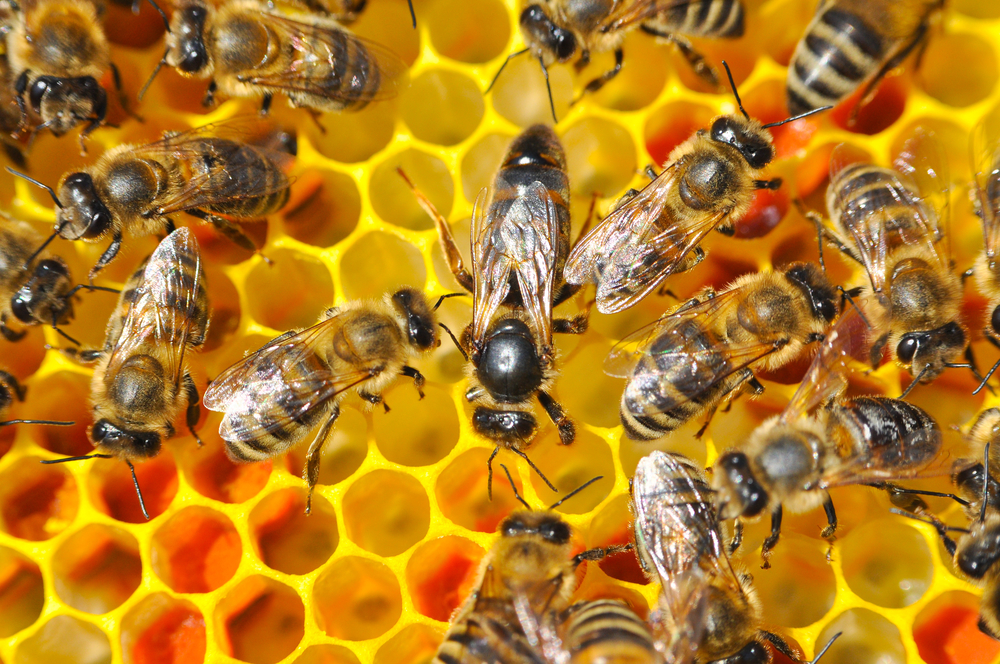Beekeepers often admit that finding the queen bee in a hive can be challenging. Even beekeepers with plenty of years of experience under their belt admit this task seems like it would be easier than it is. Some queens may appear plump and stand out among the other bees, whereas others are well hidden. There is evidence that some queens seem to want to make their royal status obvious, whereas other queens want to hide among the masses.
Why is Finding the Queen Important?
The queen bee is the glue that holds the entire hive together. She is solely responsible for making baby bees, and without baby bees, the colony will collapse. The queen also gives off pheromones that keep the hive functioning. As she ages and her ability to emit these pheromones and lay eggs decreases, the hunt for a new queen begins.
Although a missing queen can be concerning, especially for a new beekeeper, the best thing to do is to check all the sides and edges because some queens hide. One of the best things a beekeeper can do is close the hive and check back in another day or so. If you don't find your queen again, steps may be necessary to ensure the hive's survival. Some beekeepers may bring a new queen into the hive, and others may mix frames from another hive. These are things left to skilled and experienced beekeepers. However, if you find new eggs in the hive, a queen is laying them. So, even if you can't find her, new eggs are a good sign that she is still around and playing an excellent hide-and-seek game.
The Queen’s Physical Characteristics
Veteran beekeepers will have an easier time identifying a queen because it is a skill that comes from experience. New beekeepers may find it challenging to locate the queen among the worker bees, but there are some physical traits that you can start to look for. The queen bee in a hive will be larger than other bees. Her abdomen goes past the tip of her wings, so her wings may look shorter relative to the other bees. The queen’s back is hairless and black, and her legs are lighter in color than those of the worker bees.
Inspecting the Hive for the Queen
When beekeepers check for the queen's presence in the hive, they do certain things to increase their chances of finding her successfully in the first go. The first suggestion is not to over-smoke the hive. Too much smoke will force any queen into hiding, so take it easy. Check the brood nest first because the queen is likely on the frame with the new eggs. Frames with honey and covered brood will be less likely to have the queen.
Practice Makes Perfect
New beekeepers and those with smaller apiaries may be more challenged because there are fewer opportunities to search for queens. If you have one or two colonies, you will want to open them up infrequently, so they don't become stressed. Searching for a queen is safe to do once or twice a month. So, how can a beekeeper hone their queen-finding skills without overworking the hive? Social media outlets, books, apps, and videos allow beekeepers to use examples to find and identify bees. This can be a fun way to sharpen your queen-finding skills, and it is also entertaining.

Get help with your beehive or bee swarm removal! Call Today 760-224-3040 Or 951-265-8292!
Connect with Local Beekeepers
Whether a novice or veteran beekeeper, the focus is to care for bees and ensure their continued survival and success. Connecting with other local beekeepers is an excellent way to learn about other's techniques and experiences, which is invaluable to new beekeepers. All beekeepers know that careless handling of a beehive in the wild with poisonous pesticides can devastate hives in the area. If you know of a beehive that is a concern or think a beehive has developed inside a structure, please do the right thing and contact a live bee removal company like D-Tek that uses experienced bee technicians and humane techniques to remove live bees from the hive and relocate them to a local apiary. Under no circumstances should a beehive be sprayed with over-the-counter pest killers or knocked down – not only is there a risk to people, but the bees also need to be protected because they are vital to pollination and environmental balance.
D-Tek Live Bee Removal is owned by a veteran beekeeper and hires only the most qualified technicians. They can remove hives of any size and do necessary repair work if the removal causes damage. There is no more committed bee removal service, so if you have questions about finding your queen, want some local honey, or need help with a beehive or swarm, contact D-Tek today at 760-224-3040.
